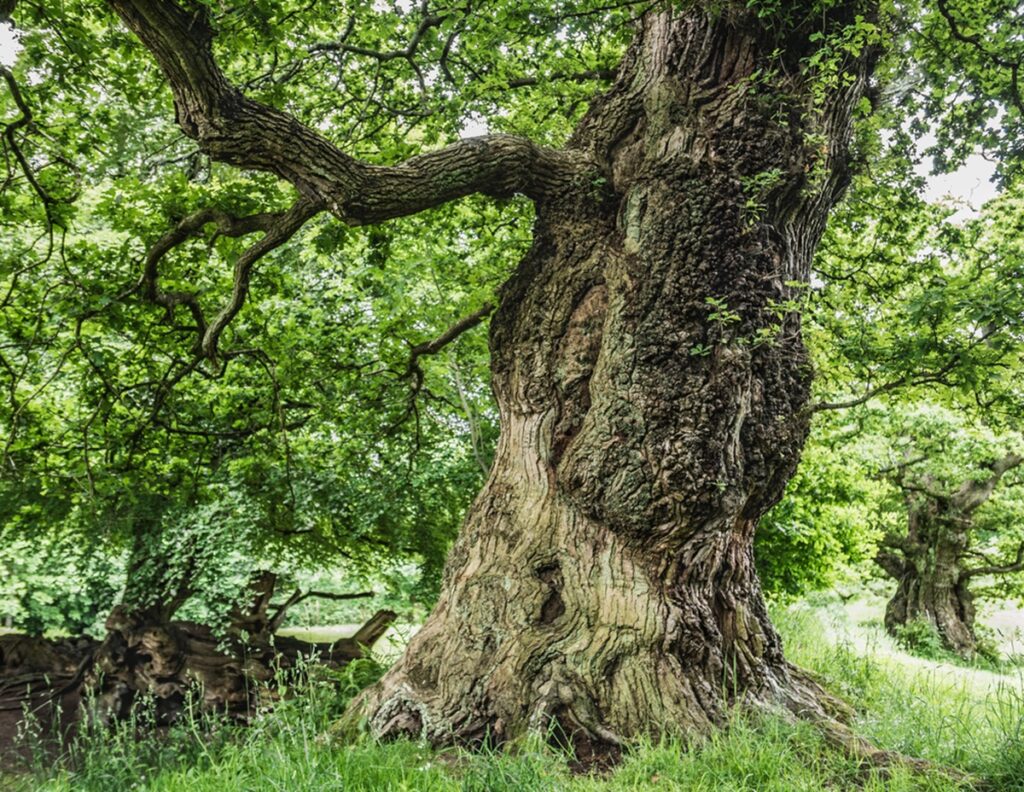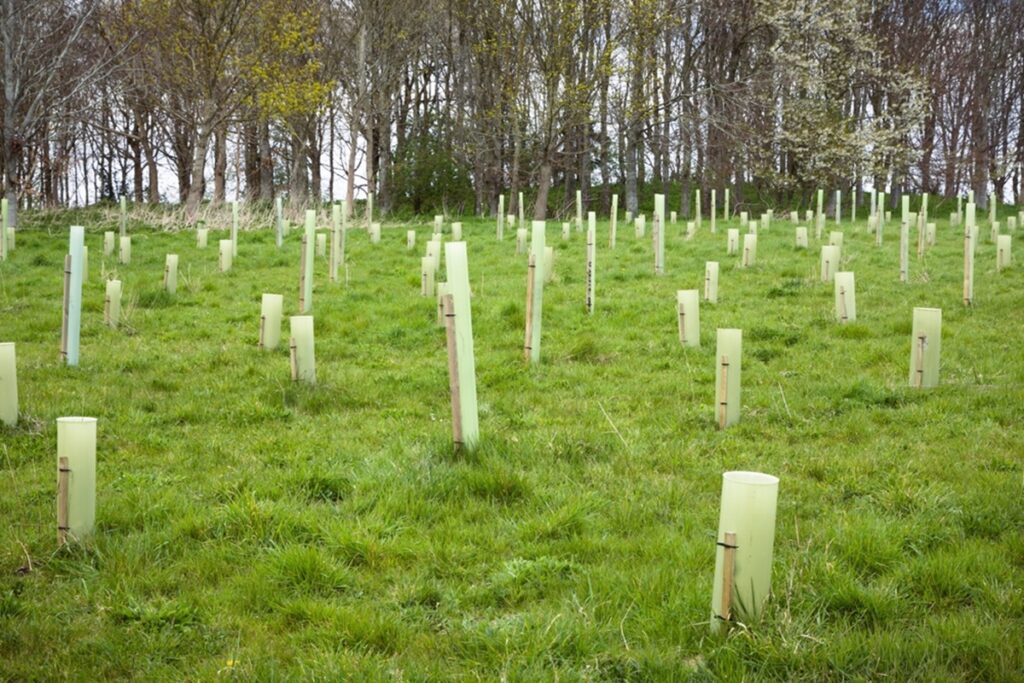Biodiversity Net Gain North Yorkshire
The introduction of biodiversity net gain (BNG) into UK law through the Environment Act 2021, which attained royal assent in 2021, has transformed the way development projects in North Yorkshire are assessed and approved.
Strengthening existing legislation, the principle of BNG is to ensure that biodiversity is measurably enhanced as a result of development, leaving habitats in a better state than before construction begins. Since February 2024, achieving biodiversity net gain has become a legal requirement for most development planning applications across North Yorkshire. From April 2024 the legislation applied to small sites with a few exemptions.
Environment Act measures mean that developers must now work with qualified ecological consultants to establish the baseline ecological value of a site and demonstrate how a minimum of 10% net gain in biodiversity will be delivered. This can be achieved through on-site enhancements, the purchase of off-site biodiversity units, or a mixture of both, but all measures must be fully evidenced and approved by the local planning authority and maintained for a minimum period of 30 years.
Alongside the Environment Act, BNG is supported by the National Planning Policy Framework, Natural England’s statutory biodiversity metric, and Local Nature Recovery Strategies which guide ecological priorities across the county. These combined policies ensure that protecting and enhancing habitats is built into the planning process from the outset, encouraging developers to integrate biodiversity considerations early to avoid delays and redesigns later in the process.

Ecological Features in North Yorkshire
This is the largest county in England, with an exceptionally diverse landscape containing sites of strategic significance ranging from the North York Moors and Yorkshire Dales National Parks to the Vale of York, the Yorkshire Wolds, and extensive coastal areas. The county supports a rich variety of habitats including ancient woodlands, sites of special scientific interest, lowland meadows, rivers, upland heath, wetlands, and species-rich farmland. These areas are home to many protected species such as bats, badgers, otters, great crested newts, barn owls, and rare upland birds.
Because of this ecological richness, biodiversity conservation is a priority and biodiversity net gain assessments need to be carefully tailored to each development site. The presence of priority habitats, nature conservation sites or protected species may require additional surveys, such as a habitats regulations assessment, and proposals are reviewed against local authority policies as well as statutory requirements.
Environmental Management
Local Nature Partnerships and Wildlife Trusts are active across the county, working to restore ecological networks and improve habitat connectivity. This means that BNG plans in Yorkshire must not only deliver measurable improvements but also align with local planning authorities wider conservation priorities to gain planning approval.

Preparing a BNG Assessment: Development Planning
The first step in meeting biodiversity net gain requirements is to commission a baseline biodiversity survey, carried out by a qualified ecologist according to the quantitative framework established by the Environment Act. This involves identifying and mapping existing habitats, assessing their condition, and calculating their baseline value using the government’s Biodiversity Metric tool to achieve a habitat condition score and a pre development biodiversity value.
Protected species surveys may also be required, depending on the characteristics of the site and its surrounding landscape.
Once the baseline data is collected, an experienced ecologist will calculate the projected biodiversity value after development, taking into account the destruction undertaken, proposed landscaping, the habitat creation required, higher value habitats, lower value habitats and land management measures.
If the predicted value obtained from the biodiversity metric calculations does not reach the mandatory 10% uplift, further habitat enhancements must be planned and included in the biodiversity net gain strategy. Reaching a suitable net gain solution ensures that a planning application meets legislative requirements and reduces the risk of refusal or costly amendments later in the process.

Delivering Biodiversity Net Gain BNG
In many cases, biodiversity net gain bng in North Yorkshire can be achieved on-site. Measures may include planting new hedgerows, creating wildflower meadows, tackling habitat degradation, enhancing riparian zones along rivers, incorporating wildlife-friendly sustainable drainage systems or altering land management strategies.
In rural areas, creating on-site habitat is often achievable due to available land, but in urban settings such as York, Harrogate, or Scarborough, space may be limited.
Off-site BNG to Achieve Net Gain
With developments unable to meet the 10% requirement on-site, developers can secure off-site units from accredited habitat banks, conservation sites or third party land. Units amassed by off-site habitat creation represent measurable habitat improvements carried out elsewhere, ideally within the county to ensure local benefits are retained. A monitoring plan and legal agreement must be drawn up to ensure such sites and the habitat created are correctly maintained for a period of 30 years.
As a final option, statutory biodiversity credits can be purchased to achieve net gain, although this is generally seen as a last resort. Our consultancy can advise on sourcing biodiversity net gain units and ensuring that conservation covenants are in place to meet legal requirements and achieve the net gain needed to allow an economically viable scheme to progress.
When the full details have been gathered we will monitor the biodiversity information submitted to local planning authorities.

Protected Species Surveys
Many development sites in North Yorkshire also require protected species surveys alongside BNG assessments. These surveys may cover bats, badgers, great crested newts, reptiles, nesting birds, or otters, depending on the habitats present.
Conducting these surveys early allows for the biodiversity net gain plan to be fully aligned with the mitigation hierarchy: avoiding harm wherever possible, minimising impacts of the development process where they cannot be avoided, and compensating through habitat creation or enhancement.
With biodiversity gain a mandatory requirement, integrating protected species considerations into the bng plan helps ensure that developments are both legally compliant and ecologically responsible.
The BNG Plan
A net gain plan sets out how a development will achieve its statutory 10% uplift in value according to the biodiversity metric. It includes detailed habitat creation and habitat restoration, long-term management and monitoring schedules, and evidence that the improvements to the natural environment will be maintained for a minimum of 30 years.
Local authorities in North Yorkshire require these biodiversity net gain principles to align with Local Nature Recovery Strategies, habitat management plans and county-wide ecological objectives. By following the mitigation hierarchy and demonstrating net gain, developers can secure planning permission while also contributing to the county’s natural environment.
Experienced BNG Support
Our experienced ecology consultancy provides biodiversity net gain assessments across North Yorkshire and the wider UK. We support all types of projects, from minor development to major developments, residential and non residential, working closely with planning consultants, architects, and custom housebuilding developers to integrate biodiversity considerations into every stage of the project to see planning permissions granted.
Our Services
We provide baseline biodiversity surveys, BNG metric calculations, habitat creation advice and other assessments including protected species surveys and preparation of detailed biodiversity net gain plans. Where off-site delivery is required, we guide clients through sourcing biodiversity units and meeting all statutory obligations to secure planning permissions for development projects.
Obtain a Free Quote for Biodiversity Net Gain North Yorkshire
If your planning application in North Yorkshire requires a biodiversity net gain assessment, our team can provide a free, tailored quote. Simply use our contact form or get in touch for further information using the telephone number on this page.
If you accept our quote, we will arrange a site visit at a convenient time, carry out the necessary baseline and protected species surveys, and prepare a clear, compliant biodiversity net gain plan to support your development.
By ensuring your project meets the biodiversity gain requirements of the Environment Act 2021 and local planning policies, you will maximise your chances of securing approval while leaving the environment in a better state post development.